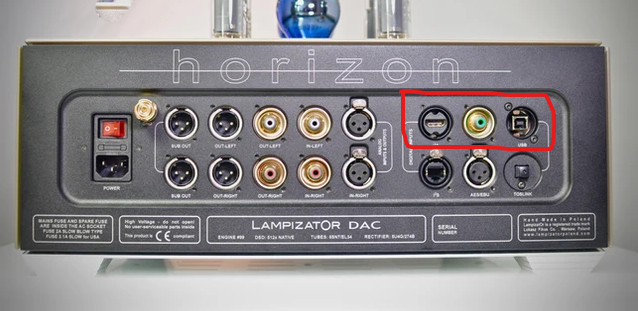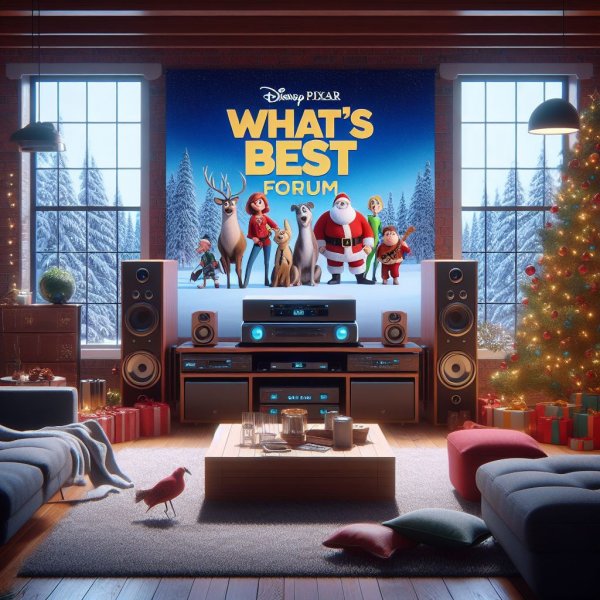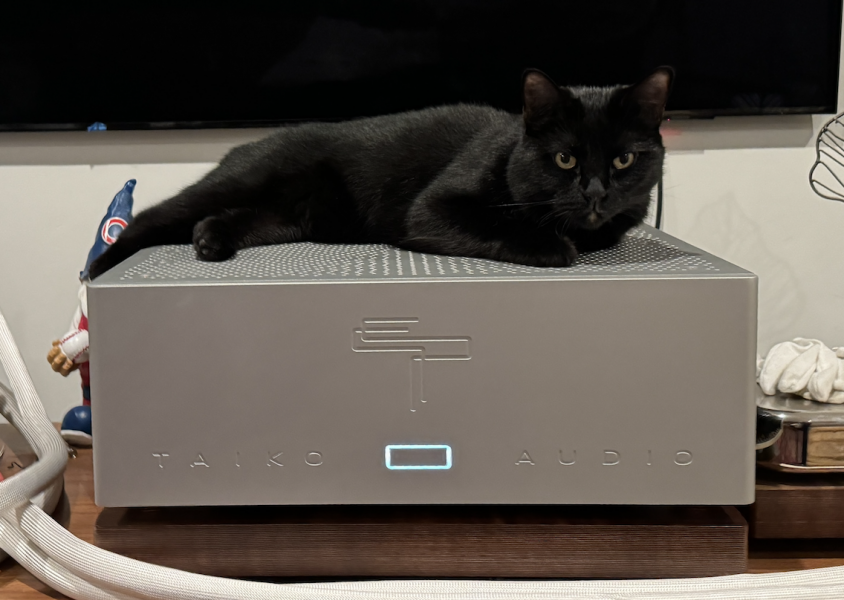Post #235 Emile answers thisIt would be nice for him to answer for himself, rather than a cheerleader. I paid €28k so this isn’t about me, and yes the €5k offer is a sweet deal, but perhaps let the owner speak to this. No?
Introducing Olympus & Olympus I/O - A new perspective on modern music playback
- Thread starter Taiko Audio
- Start date
You are using an out of date browser. It may not display this or other websites correctly.
You should upgrade or use an alternative browser.
You should upgrade or use an alternative browser.
I think they should give the current market price of €28,000 as a trade since with inflation both the new and used costs have gone up. This should carry over with the trade in my opinion. It would also make things easier for creating a standard price rather than many different price quotes on trade ins. Make it a standard €28k and call it a day. Just my 2¢ @Taiko Audio
Unfortunately the math doesn’t work on that.
It seems to me that if you thought a masterclock was necessary for optimum sound, you would have included a connector on the daughterboard from the outset. Can you kindly expand your thoughts on this? Other digital systems use optional and often very expensive (25K) masterclocks which they claim are required for peak performance. Yet it seems that you consider this a "perhaps nice to have" but not a "must have" for top level sound. Is this more of an incremental value proposition for Taiko that is just not necessary or desirable for the XDMI architecture, or something else that you can share?
It’s of no benefit to XDMI.
It can be part of an interface designed around the DAC providing the masterclock which XDMI can accommodate for backwards compatibility.
It would be nice to be able to use two DAC’s with the Olympus. Is that going to be possible for those of us who have had to swap USB cables for the DAC in use with the Extreme.
You can use both USB and XDMI to connect 2 DACs.
A solution would be for me to be one of those "long time" reviewers. But alas, this is as feasible as winning the multi-million dollar lottery.
I do, however, love living vicariously through all of the posts about this product. It really sounds like new barriers have been broken and I can only imagine the sweet sounds those of you who have experienced this are experiencing. If I play my cards right, perhaps one day. Until then? I am loving the empirical evidence. It is simply undeniable.
Merry Christmas and Happy Holidays, gentlemen. Please keep up the great posts!
Tom
I do, however, love living vicariously through all of the posts about this product. It really sounds like new barriers have been broken and I can only imagine the sweet sounds those of you who have experienced this are experiencing. If I play my cards right, perhaps one day. Until then? I am loving the empirical evidence. It is simply undeniable.
Merry Christmas and Happy Holidays, gentlemen. Please keep up the great posts!
Tom
Emile,We currently have 2 daughterboards available.
1) a daughterboard containing a DAC and an analogue output stage with stereo RCA out.
2) a daughterboard with XLR AES out and RCA SPDIF out.
None of these 2 boards are designed to accept an external masterclock nor do they provide masterclock.
If there’s (enough of) a demand for it we can design a daughterboard with this functionality though as the baseboard architecture allows these features.
Just wanted to make sure that I’m understanding correctly that the Olympus+Olympus I/O option will be shipped with two daughter boards - one with an analog RCA stereo output, and the other with AES and SPDIF digital outs. Correct?
Emile,
Just wanted to make sure that I’m understanding correctly that the Olympus+Olympus I/O option will be shipped with two daughter boards - one with an analog RCA stereo output, and the other with AES and SPDIF digital outs. Correct?
If you replace “Olympus + Olympus I/O” in that sentence with “XDMI” then yes.
XDMI ships with 2 daughterboards, one with an analog RCA stereo output, and the other with AES and SPDIF digital outs.
Olympus and Olympus I/O can both be ordered without XDMI.
You ordered Olympus, Olympus I/O and XDMI, so yes you will receive both those daughterboards
Great. Thank you for the clarification Emile!If you replace “Olympus + Olympus I/O” in that sentence with “XDMI” then yes.
XDMI ships with 2 daughterboards, one with an analog RCA stereo output, and the other with AES and SPDIF digital outs.
Olympus and Olympus I/O can both be ordered without XDMI.
You ordered Olympus, Olympus I/O and XDMI, so yes you will receive both those daughterboards
Best holiday wishes to the Taiko Team!
Emile, this is exciting for headphones users. When you get to the planning phase, would you consider putting a more powerful headphone amp in the Olympus I/O box, maybe even something balanced?It does not have volume control. We are however interested in adding one in the future, mainly as part of providing a direct headphone output module.
Emile, this is exciting for headphones users. When you get to the planning phase, would you consider putting a more powerful headphone amp in the Olympus I/O box, maybe even something balanced?
Yes we can do that.
I enjoy Stax headphones. Will Olympus be compatible with them too? ThanksYes we can do that.
Electrostratic headphone output sure, why not! Bleeding edge digital Swiss Army Knife.I enjoy Stax headphones. Will Olympus be compatible with them too? Thanks
Electrostratic headphone output sure, why not! Bleeding edge digital Swiss Army Knife.
hey, if i can sell my T2 electrostatic amp and my DAC, i might be able to afford the Olympus!
Well the new drives can run off battery power so yes that does perform better. You do tend to pay around 100 euro per each TB of new drive capacity so that is a consideration. It sounds great with the old drives too, it’s not critical to performance.
Can the new storage modules be used together with the old modules migrated from the Extreme? For instance, if an Extreme owner with 8TB of storage in his Extreme wished to transfer those drives to his new Olympus and also purchase an additional, say, 8TB of storage space, would you recommend the new generation drives for the expanded storage? Or would that create compatibility issues?
Nice. Had asked a few days ago about the potential of xlr out from Olympus to mono balanced amps in the future/or current.Yes we can do that.
understood only rca currently available. Is xlr possible or is this a different animal vs post above re the positive that balanced out for olympus headphone amp?
Last edited:
Seconded - would love to have XLR analog outputs on mine as my amps only take XLR inputs. Would like to avoid an adapter if possible. Goal is ultimately to interface digital XDMI to the Horizon with whatever Emile/Lukasz come up with, though.Nice. Had asked a few days ago about the potential of xlr out from Olympus to mono balanced amps in the future/or current.
understood only rca currently available. Is xlr possible or is this a different animal vs post above re the positive that balanced out for olympus headphone amp?
@Taiko Audio would ripping out these three ports give enough room?
Merry Christmas!

If you replace “Olympus + Olympus I/O” in that sentence with “XDMI” then yes.
XDMI ships with 2 daughterboards, one with an analog RCA stereo output, and the other with AES and SPDIF digital outs.
Olympus and Olympus I/O can both be ordered without XDMI.
You ordered Olympus, Olympus I/O and XDMI, so yes you will receive both those daughterboards
Thanks for being so clear - this means that people currently owning or considering top DACs will have to use AES or SPDIF lines - implying that clocks must be extracted from these lines that carry the digital data. The limitations and problems of these lines, when used asynchronously have been addressed extensively for decades, can we know why you think that this a preferred mode of data transmission to a DAC?
Similar threads
- Replies
- 2
- Views
- 5K
- Replies
- 1
- Views
- 670
- Sticky
- Replies
- 521
- Views
- 90K
| Steve Williams Site Founder | Site Owner | Administrator | Ron Resnick Site Owner | Administrator | Julian (The Fixer) Website Build | Marketing Managersing |




